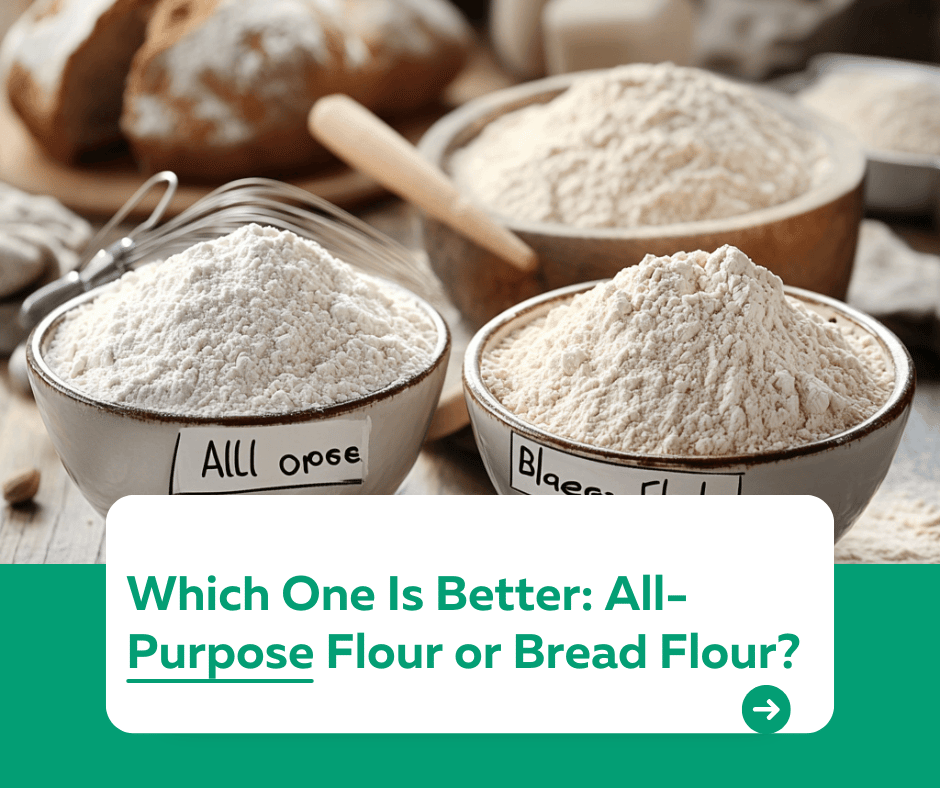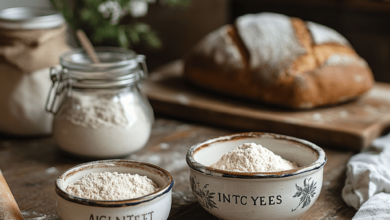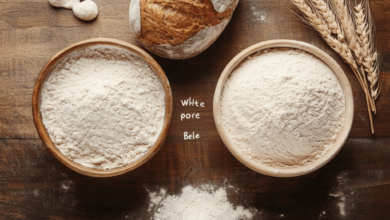Which One Is Better: All-Purpose Flour or Bread Flour?

Introduction
“Which one is better: all-purpose flour or bread flour?”
Choosing the right flour can make a significant difference in your baking results. All-purpose flour and bread flour are two of the most commonly used options, but they serve different purposes. In this guide, we’ll break down the differences between these flours, their best uses, and how to choose the right one for your recipes.
1. All-Purpose Flour: The Versatile Option
All-purpose flour is a staple in most kitchens due to its versatility.
- Protein Content: Contains 8–11% protein, making it suitable for a wide range of recipes.
- Best Uses:
- Cakes, cookies, and muffins.
- Quick breads and biscuits.
- Lightly textured bread like focaccia.
- Advantages:
- Readily available and affordable.
- Works well in most recipes without modifications.
Tip: Use all-purpose flour for recipes where a tender texture is desired.
2. Bread Flour: The Stronger Choice
Bread flour is specifically designed for yeast-based recipes.
- Protein Content: Contains 11–14% protein, which creates more gluten and gives bread its chewy texture.
- Best Uses:
- Artisan bread and baguettes.
- Pizza dough.
- Bagels and pretzels.
- Advantages:
- Provides better structure and rise for yeast-based recipes.
- Creates a chewy, robust texture.
Tip: Use bread flour for recipes requiring strong gluten development.
3. Key Differences Between All-Purpose Flour and Bread Flour
- Protein Content: Bread flour has more protein, leading to stronger gluten formation.
- Texture: All-purpose flour yields tender baked goods, while bread flour produces chewier textures.
- Rise: Bread flour enhances the rise in yeast-based recipes due to its higher gluten content.
Tip: You can substitute one for the other, but adjustments may be needed for optimal results.
4. Can You Substitute All-Purpose Flour for Bread Flour?
Yes, but with some considerations:
- Substitute Bread Flour with All-Purpose: Your bread may be slightly less chewy but still delicious.
- Substitute All-Purpose Flour with Bread Flour: Your cookies or cakes may be denser due to higher gluten content.
Tip: Add a bit more liquid to the dough when using bread flour in place of all-purpose flour.
5. Which One Should You Use?
- Choose All-Purpose Flour If:
- You’re making soft baked goods like cakes or muffins.
- You need a versatile flour for a variety of recipes.
- Choose Bread Flour If:
- You’re making yeast-based bread or doughs that require strong structure.
- You want a chewy, robust texture in your bread or pizza crust.
Conclusion
Both all-purpose flour and bread flour have their unique strengths, making them essential for different types of baking. By understanding their differences, you can confidently choose the right flour to achieve the perfect texture and rise in your baked goods.
For more baking tips and guides, visit our Kuestion.com.




